How does the station
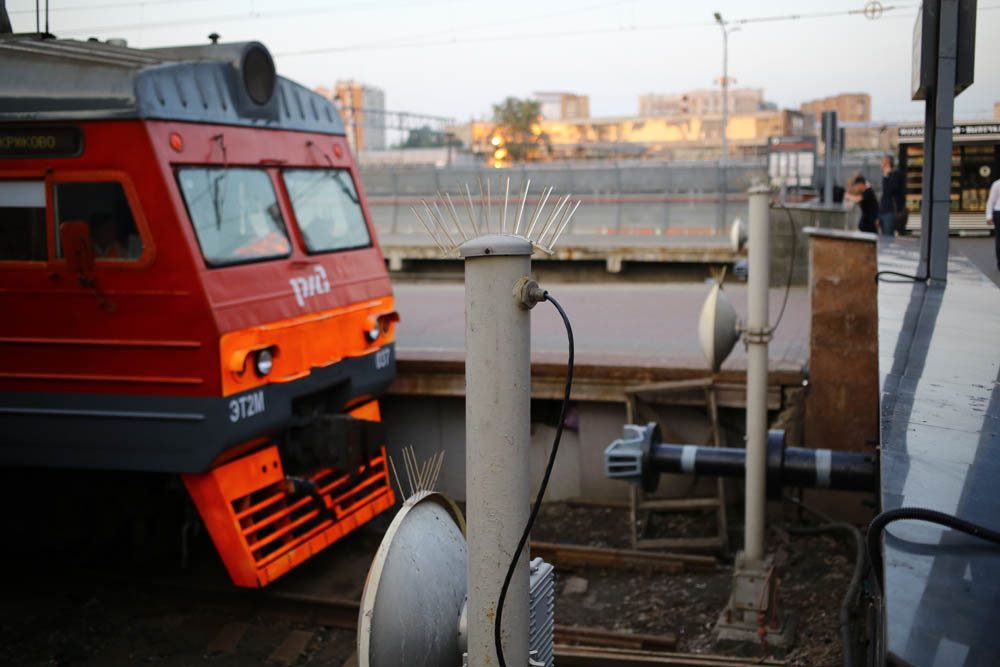
The station is a place where various services are provided to passengers, until they board the train or after they get off the train. In fact, this device is included in the gap between the city and the railway. Inside the train station there is already a railway station. The train arrives exactly at her. More at the station are different services, for example, the control room. But basically the station is a place for serving passengers: luggage storage, medical center, help desk, ticket office, terminals, waiting rooms, various cafes, toilets, and so on.
The station ends where the platform for passengers ends. The trains are serviced and refueled not at the station, but at special points of the sludge somewhere nearby (or not at all nearby and are served at the station ready).
Luggage storage

')
There are two types of storage rooms: good old automatic ones, almost like in the USSR, and just stationary, like a wardrobe with a person issuing checks. Automatic storage cameras work with RFID-cards, which can be purchased at the checkout from the operator. To purchase a card, you must show your passport and face. Any person who has this card can get an item from the automatic storage chamber.
If the passenger returns and says that he has lost the card, then you can get access after filling out the paper on the passport (that's why you need passport data). If you try to leave something in the automatic luggage storage room forever, then the station will know on the passport whose things are.
Our compatriots are trying to donate very different things. There is no special inspection at the entrance to the storage room, since it is assumed that the passenger cannot bring anything extraordinary to the station past the entrance control. But at the same time it is still possible to create a collision in the storage room, it is enough to hand over something prohibited by its rules, for example, a weapon or money. Of the strangest cases, somehow one of the bags began to fold. They called a police officer, and there in the bag sits a very displeased turtle. It is clear that you can take it to the station, but it’s a bad idea to take it.
Forgotten things camera
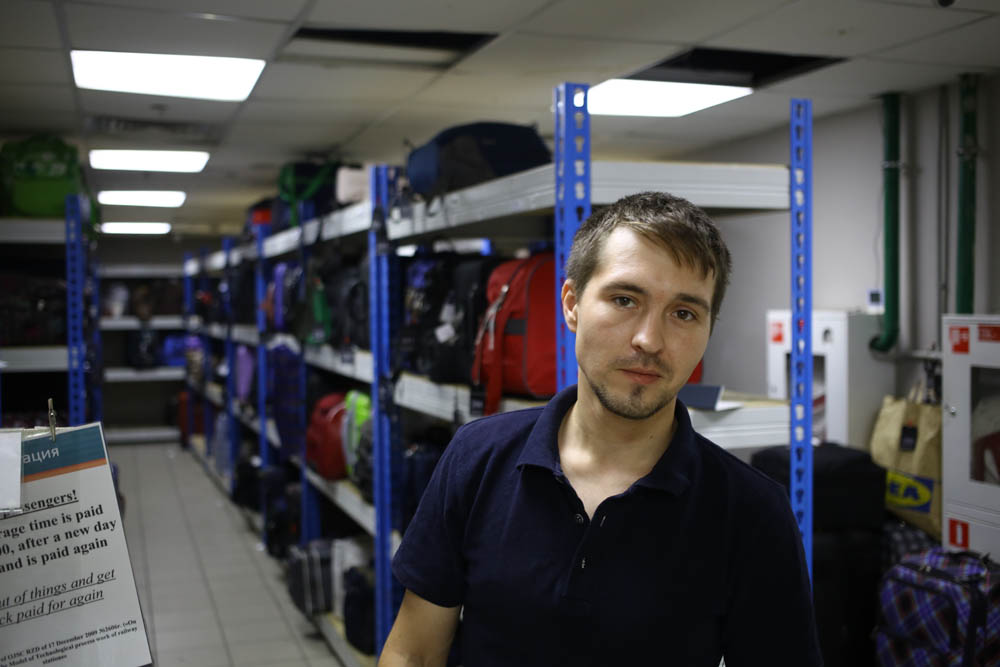
If you forget some thing on the train or at the station, then it will be brought and handed over to the chamber of forgotten things, which is located very close to the usual luggage storage. It happens like this: the finder makes up an act (for example, the conductor finds someone's phone, carries it to the train manager, and the train manager prepares an act that transferred this phone to the station to the camera of forgotten things). If it is a bag or some kind of container, then it is inspected in the presence of a policeman, and an act is drawn up with an inventory of all transferred items. Expensive things are described with signs, equipment - with serial numbers, clothes, etc. - usually just one line like "used T-shirt, 2 pieces."
If there are documents, the police are trying to find the owner of things on his line.
Foodstuffs are stored in the chamber of forgotten things for three days and then disposed of according to the sanitary act.
Forgotten things are kept for 30 days. To pick them up, you need to pay 230 rubles (this is the cost of storage). There used to be a dachshund by the day, as if you had handed over these things to the luggage room, but the station quickly realized that no one would pay 2,500 for a T-shirt, and there was a fixed rate in the rules.
If nobody took things away, then after 30 days they are disposed of. To do this, the police officer, the head of the storage room, the head of the station and the storekeeper monitor the destruction of things (as a rule, they are simply thrown away).
Documents from things are not destroyed, but transferred to the police.
If you leave things in the storage room and pay for the day, and then do not come for three days and do not extend the storage (and even do not call), then things will be considered lost, and the same procedure will go.
About 15–20 items from the trains are brought to the chamber of forgotten things of the Leningrad station per day. I recall that according to the rules of transportation, the forgotten thing is rented at the end point. The specific composition of the finds is very dependent on the weather and the season, because in the top of the most frequent finds are umbrellas, baseball caps, scarves. During the Championship, an average of 40 acts per day were brought in, and the luggage room was under some counterpart of didos. Even a cat (in a cage-container) was forgotten on the train once, it was described in an act and brought into the chamber of forgotten things, which put the storekeeper in a logical impasse. Fortunately, the owner quickly found.
It is useful to know that things are surrendered upon departure of the train. That is, if the parking is 40 minutes, then forgotten things will be transferred to the station somewhere on the 35th. Then quickly you will not get them, because there will be an act, inspection and all the cases. Therefore, the correct procedure is this: you can run to the station attendant before the train leaves, he can immediately contact the train manager, and the train manager can give the thing directly.
Often, the guides bring to the station all the rubbish in the chamber of forgotten things. For example, once a passenger wrote a statement that he had forgotten an empty plastic bottle on a train. But big problems are delivered, for example, disposable slippers FPK: after the passenger got them on the train, they became his property. According to the instructions can not throw away the property of the passenger, this is a violation. Therefore, part of the conductors quietly dispose of them, hoping for common sense, and some follow the letter of the instructions and bring them under the act to the station. The second feature - passengers often leave second-hand underwear in trains and toilets. As a rule, it is not just used, but with traces of various adventures, therefore it is better to take it in gloves. This, too, must be stored according to the instructions.
Infosers

At the station there are 22 columns through which you can ask a stupid question or call the police, doctor, gas service or Sportloto. They lead to the situational center of the station. The situation center of the station is a place where cameras are visible, where there is a connection with all services, and where someone is always sitting, ready to solve the problems of passengers. Infososy of the Leningrad station is not connected with other similar columns of an emergency call, but represent a separate network. At the stations near Moscow, you can still find CPPK columns, in the subway - subway columns, in the city - still different devices for calling the police.
The video signal from the station columns is still being sent to the transport police.
Inspection
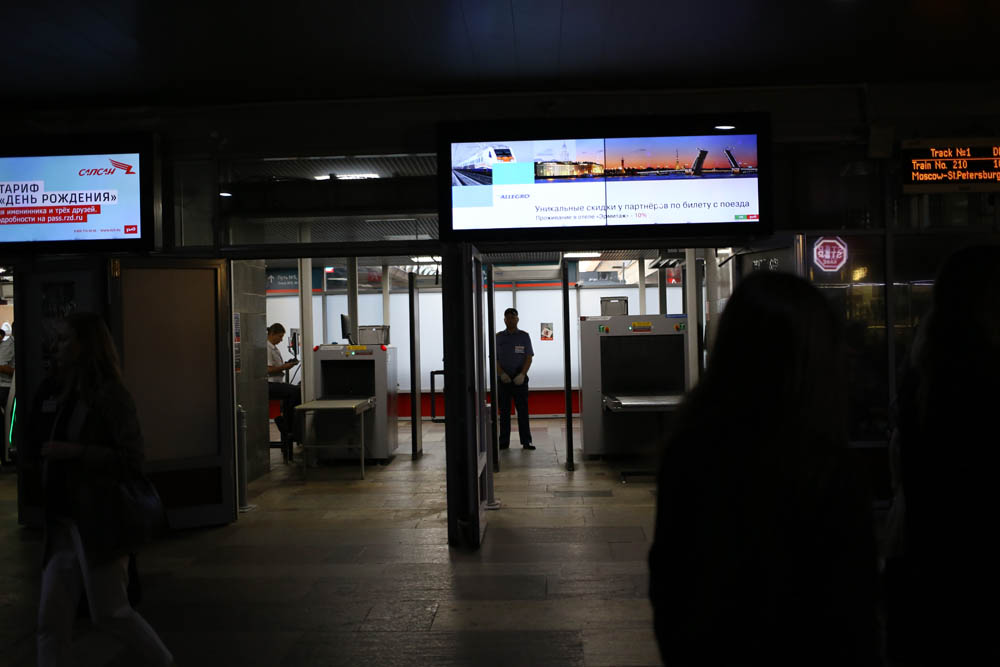
It is assumed that you can greatly reduce the risks if you inspect all those who come to the station and the train, as is done at airports. Previously, they inspected only the things of the Sapsanov passengers on the introscopes (X-ray scanner), but now, according to the new safety requirements, already all the trains. This is a standard. There are more inspection points at the entrances to the station. At the station, there is a patrol with a dog service officer, and this officer takes with him a specially trained dog who can find various interesting things by smell. In normal times, this is just a patrol, but during major events like the World Cup, there is a separate level of screening for everyone.
The quality of inspection at all stations control the internal organs and the Security Council. They carry out inspections and may even organize attempts to bring something forbidden to control specialists on the search.
Nutrition
The station is powered by two independent beams from the city. As a rule, it is almost never turned off as planned or warned in advance and agree on a schedule with another power plant that supplies the second beam, because the station is very important as an infrastructure facility. Over the past 10–12 years, the deputy head of the station, Gayar Idrisovich, does not remember a single case when the entire station was disconnected at once. But in parts - yes, and they warn about it in advance.
Cleaning
Cleaning at the station clock. This is a few shifts. Every four hours, a check is made of the state of "cleanliness" of the station under the act. Do as dry cleaning and wet. The station is not exactly shiny, but almost always clean. This is especially important in the rain and in winter.
Every month a check comes to assess the microclimate (MACs of various substances, air purity, oxygen availability, temperature, biological pollution, etc.).
There are also separate standards for lighting, moreover, separately - to the halls, separately - to the working places of the station team (and all tenants), and separately - to the platform. By the way, every year it becomes more covered platforms, therefore it is more pleasant for passengers to them, and it is already easier to clean-light them.
Barrier free

Patients are often brought to the stations for transportation, plus people with disabilities travel by train, so the modern trend is a barrier-free environment. This is when you can get in a wheelchair at the station, drive it through all the necessary points, and then get on the train normally. Leningradsky railway station meets these requirements.

For disabled people there is a whole range of services. For example, at the entrance they can meet a special employee. There is a separate waiting room: it is more spacious than usual, there are charging sockets and a separate scoreboard.
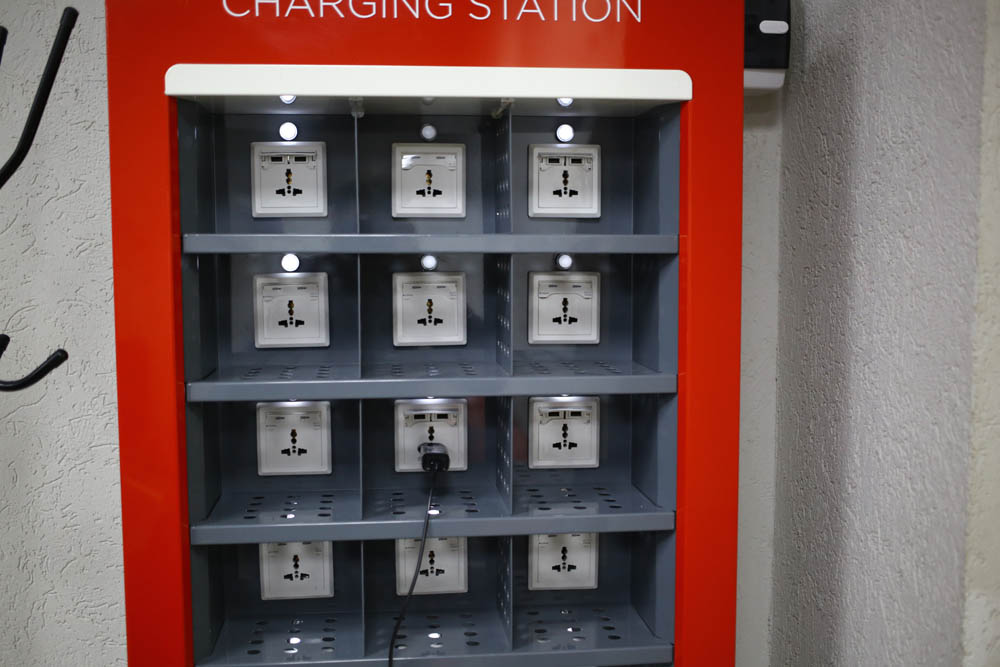
Near this room there is a toilet with a spacious shower. In theory, by the way, it can be used by any passenger of the station for free, but they try not to advertise this fact, because then queues are formed.

Lifts are suitable for wheelchairs. There are escalators, there is an indication in volume font (and they don’t order it under glass, as sometimes happens), there are tactile strips on the floor, hearing aids in critical places.
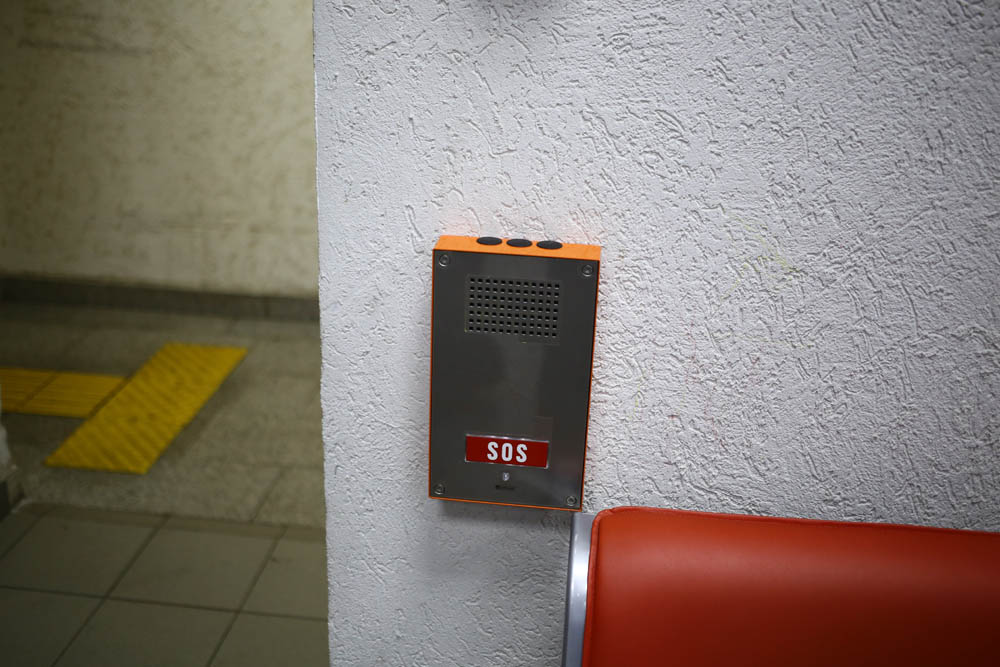

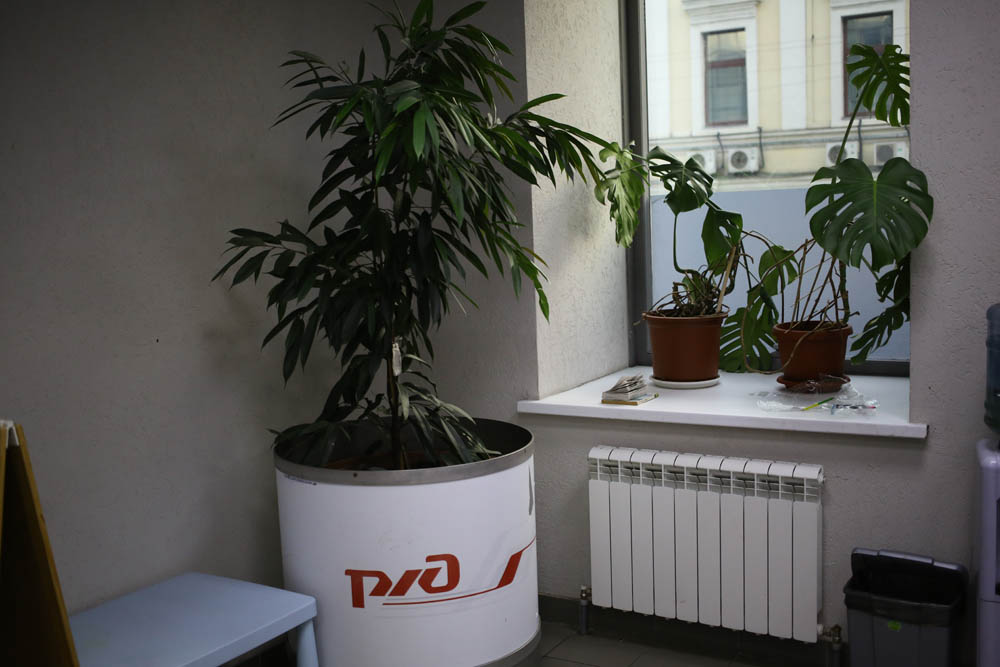
Even at the station there is a room for mothers and children and a separate children's corner with a large playground.


Toilets
The most important thing in the toilets of the station is that they are paid, but they can be used for free on the ticket for both the train leaving today and the one that arrived today (the same applies to all intermediate stations along the way). It even works with the train ticket. It even works with the electronic registration at the Leningradsky railway station - you just need to show the form with the date and train.
Ticket Office

Here, the whole hall of the station went for rent to different contractors, in particular, under the box office and under the delivery service of small items by train (for example, on the second floor you can send documents to Sapsan to St. Petersburg). The service center can dock even with the bus, plane or hotel. The times when barkers went to the buses on the territory of the station and shouted loudly are long gone.
Pro cashier important thing - the electronic queue. She was introduced to the Championship, and now you can tear off the coupon in the terminal and sit somewhere aside. Or just look at the pictures: the stations are involved in the cultural life of the city, and there usually are some exhibitions or installations. Before the performances have not yet come.

Ticket sales can be calculated passenger traffic and capacity of the station. 7.5 thousand people fit conditionally inside the building (when nobody is worth it). In just a day, long-distance trains pass through the station about 50 thousand people. Just as much - on the suburbs per day.
In the first window of the cash register sits the senior administrator, so if something atypical happened, it is better to go to him immediately.
Recently, in the ticket hall, machines for buying tickets in the subway were installed:

Hotel
Before the World Cup, the station started the hotel. This is a separate business from the station, located on its territory.

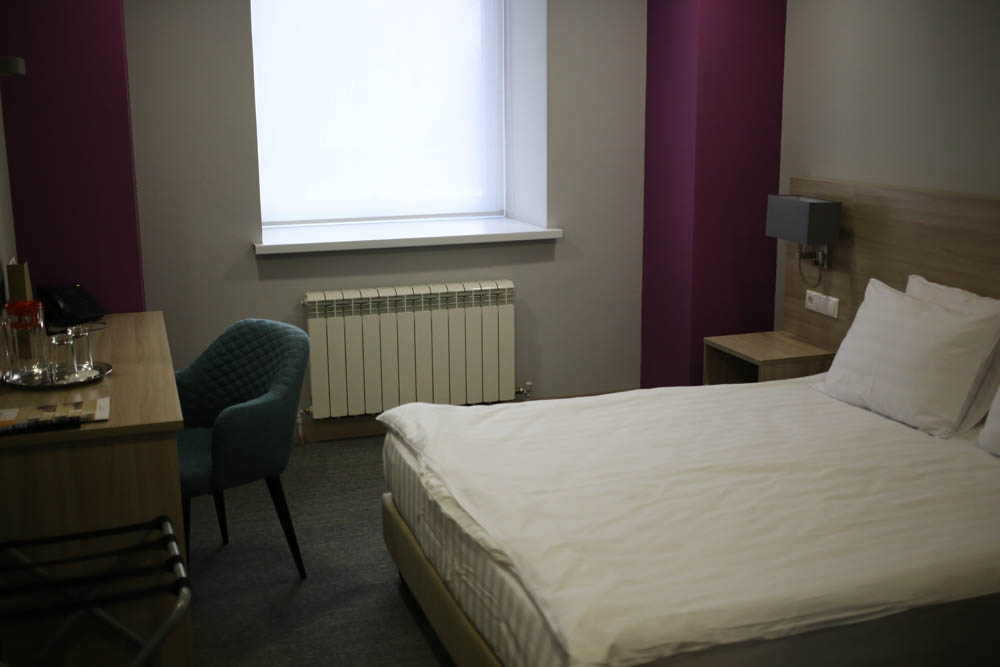

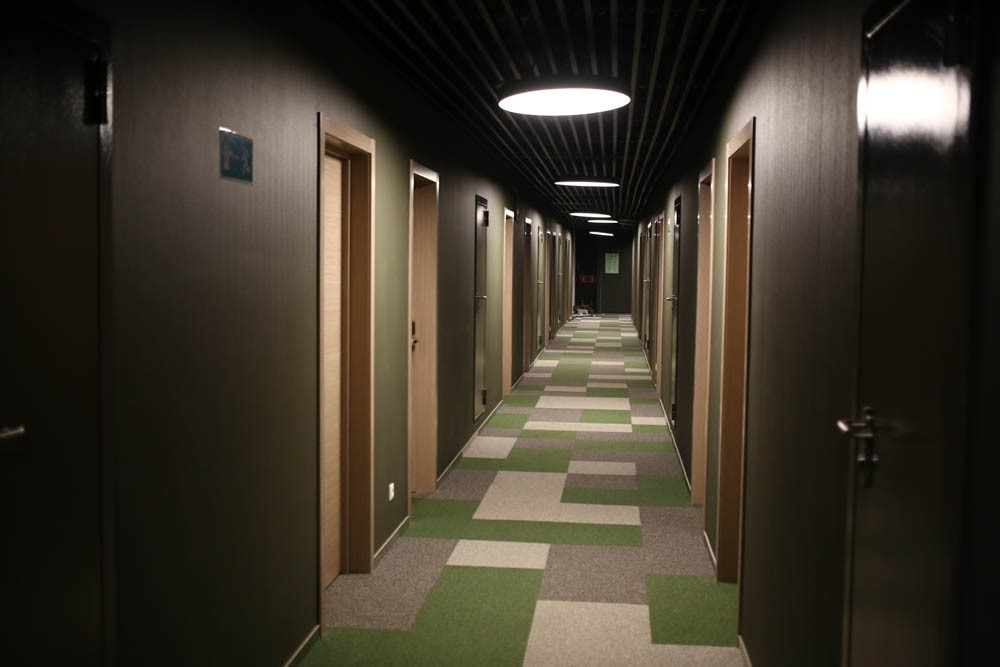
The hotel is also needed to accommodate people from trains that are very high on the schedule. Such cases, when the train is delayed by more than a couple of hours, may not happen for years. But if suddenly that - the station (together with the carrier) will have to provide seats.
All rooms are the same, there is a separate column and schedule:

Information Board and Information Systems
Four main types of passengers arrive at the station by language:
- Those who understand Russian (well, still, we're in Russia). Everything is simple, it's a native environment.
- Those who do not understand Russian, but understand English. For them there is a duplication of the scoreboard and almost all the inscriptions in English.
- Those who do not understand Russian and English. These are mainly organized Chinese groups. For them, they began to do everything in the third language - simplified Cantonese (in the comments, CrashLogger specifies that it is Mandarin), (and Zangasta clarifies the clarification that it is Baihua).
- Those who do not understand any of the languages of information. For example, at the Leningrad station a lot of Spaniards, Italians and Germans. As a rule, they can read English inscriptions, but at the World Cup, for example, came the Mexicans, who were all very pleased, but did not understand anything. For such cases of movement of large foreign groups, the station invites translators. Volunteers who knew different languages worked at the World Cup.
Contrary to the opinion that, for example, the Chinese need to show only their main routes in Chinese, the full language version is still made. Because foreign tourists travel on a variety of routes. But for the Chinese version, for example, separate speech announcements are not planned yet. By the way, it is the guests from China that make up 20% (the rate often varies greatly, but the proportion is approximately the same) from the passenger traffic. They have an inexplicable love for double-decker evening trains and Sapsans. At night, they flood the station and start eating their stored food in the waiting rooms. They do this in small groups of 50–300 people and often drink all the hot water from the coolers. More precisely, it is bred noodles.
Another Chinese mentality somehow created a problem for the elevator service. The group decided not to split up in front of the elevator and climbed into it entirely. Did not follow the rules, the elevator broke down. The Chinese were frightened and tried to scatter through heavy-duty vandal-resistant glass. They squeezed him out of the mount and bent, but could not break.
Clock setting

At the station, all clocks (even large analog switches) are connected to the local network of the clock rating system. This is a system that sets the total exact time, made transfers for summer and winter time and so on. The source of the exact time is the Russian station with atomic clocks, which is used as a source, including in some defense systems. Because the clock at the station must be accurate and fault tolerant.
When translating hours, by the way, so that passengers do not miss the trains, there is a special information mode. A month before the transfer, announcements begin, 24 hours a day there are frequent explanations of what is going to happen.
Another special case is the New Year. If suddenly you are lucky enough to meet the New Year at the station (and this sometimes happens because of the huge discounts of Russian Railways on tickets December 31), then Santa Claus and Snow Maiden will come to you. New Year's Eve itself is very quiet: the extra passages are blocked, all the gaps are closed, the station goes into protection from firecrackers, because fires are possible.
More "critical days" occur around May 9: troops arrive there to march on Red Square. There are up to 25 buses, but they behave very well, a separate waiting room is allocated for them. There are days of moving recruits and demobels, but they are practiced in the same way.
Differences from the Moscow railway station
Historically, the Moscow railway station and Leningradsky railway station were twin brothers. It was possible to take the train in the same building in Moscow, and get out of the car to another one in Petersburg. But now they are very, very different and diverge farther with each year. For example, in Moscow they made balconies in a large hall, which added space for all kinds of cafes. By the way, at the station there are “talks” for delegations and even a rich room of official delegations (with a deputy hall), but ordinary people prefer to make appointments in the restaurants of the station. Previously, this was tight, but now there are many. By the way, classmates and graduates often meet there.
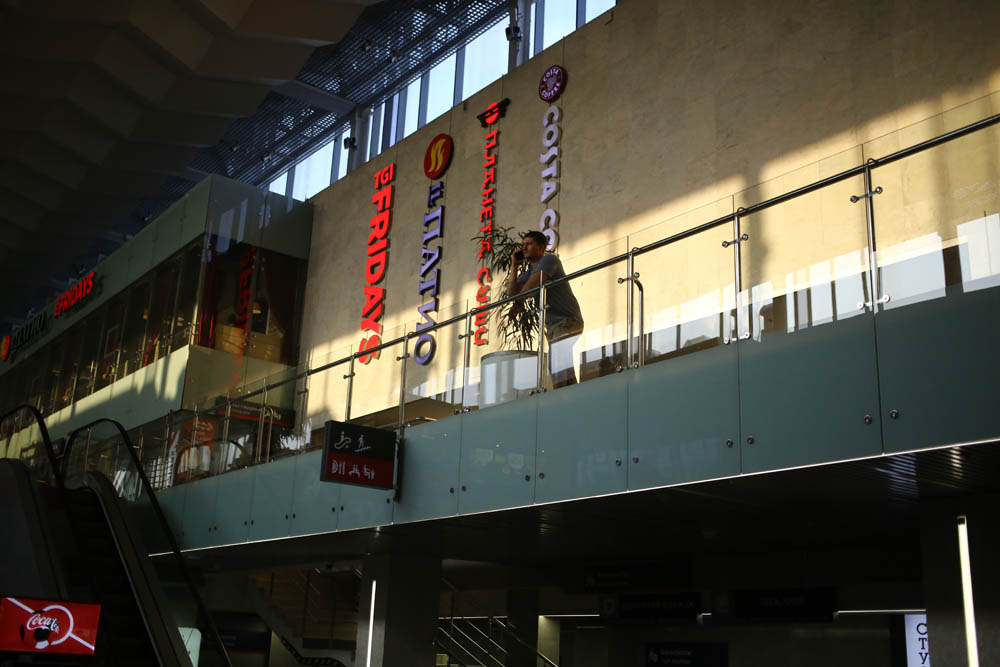


On the ticket, the station was designated as Moscow-October, that is, OCT. This created a number of special issues when a passenger who was not familiar with the history of Moscow tried to go to the Oktyabrskaya metro station. Where there is no train station. Station is on Komsomolskaya. It is called Leningrad. And the OCT designation is from the October Railway.
Very different tenants at train stations, and therefore different requirements for them. For example, at Leningradsky there is not only a familiar set of “minimum system requirements”, but also the need to fit into the concept by smell in the common room.
Different lighting, in particular, the upper lamp and perimeter light. But the stained glass windows are almost the same.
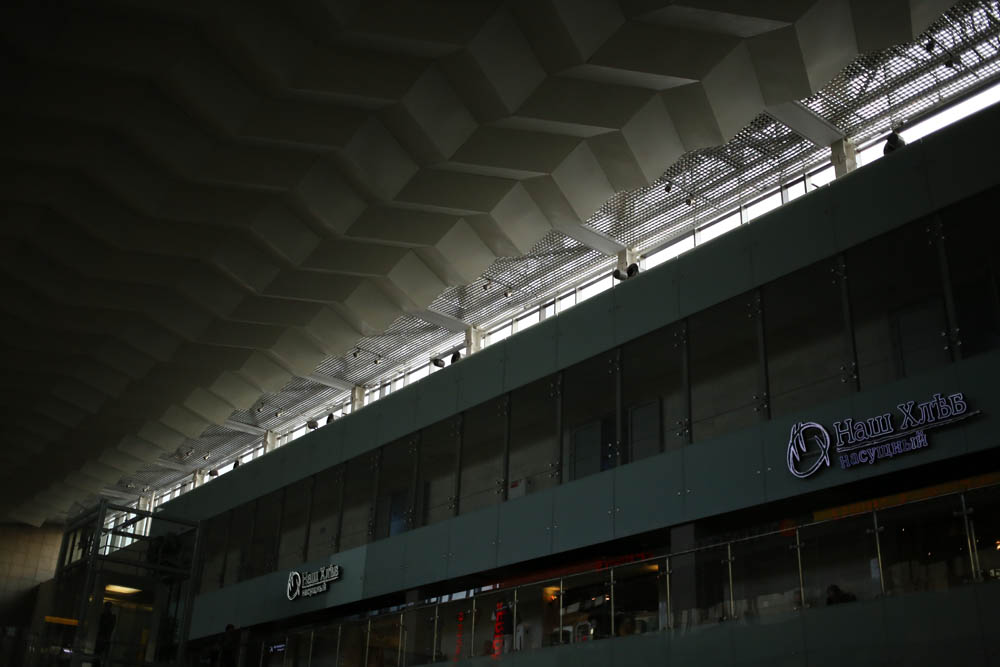
Platform

On the platforms of the station made new posonovaya navigation. Previously, it was quite difficult to guess where the train car would come. Now, with an accuracy of up to three cars, the navigation shows you which sector to stand next to. This greatly reduces the movement of people around the platform when the train arrives. At the World Cup it helped a lot.
Now the station has repaired three platforms (in particular, under the Swallows - long), it is going to reconstruct the first one, they are planning to upgrade the superior room.
More specifically, the Leningradsky railway station clusters two trains to Leningrad, which are nearby. For example, if departures are at 19:30 and 19:40, then they will stand on the same platform so that passengers do not miss.
Pay attention to the protection from birds: these are the pins in the photo above, and they also come here:
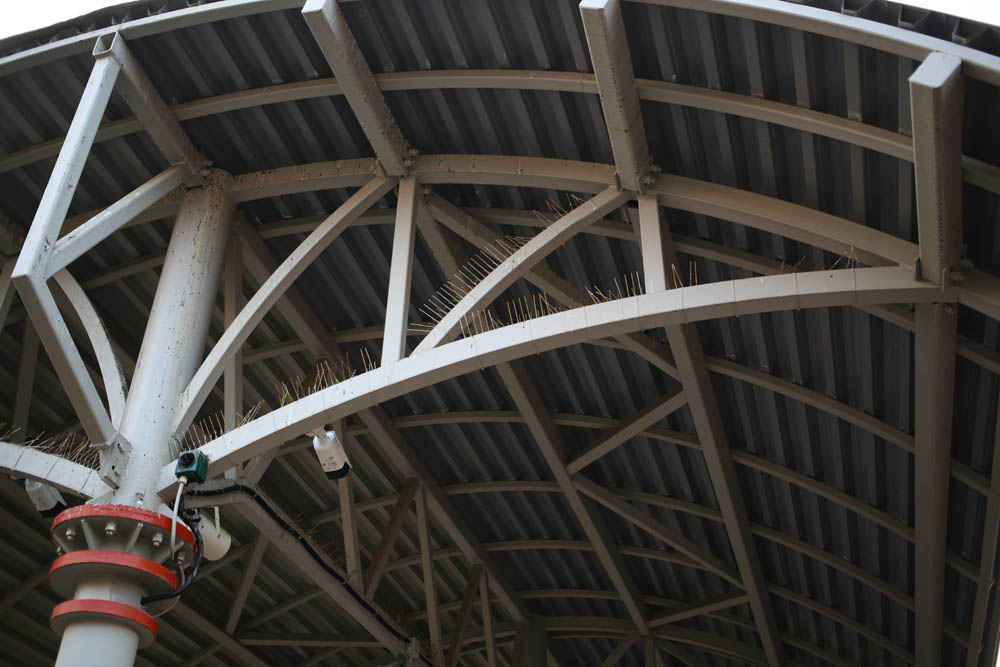
First-aid post

Naturally, the station should be a first-aid post. They provide first aid, that is, support until the arrival of an ambulance. Medical staff go to the trains for calls when someone inside is bad (they serve electric passengers too), carry out relay observations (when the patient is transported to several stations), monitor the transportation of the wounded and patients for surgery.
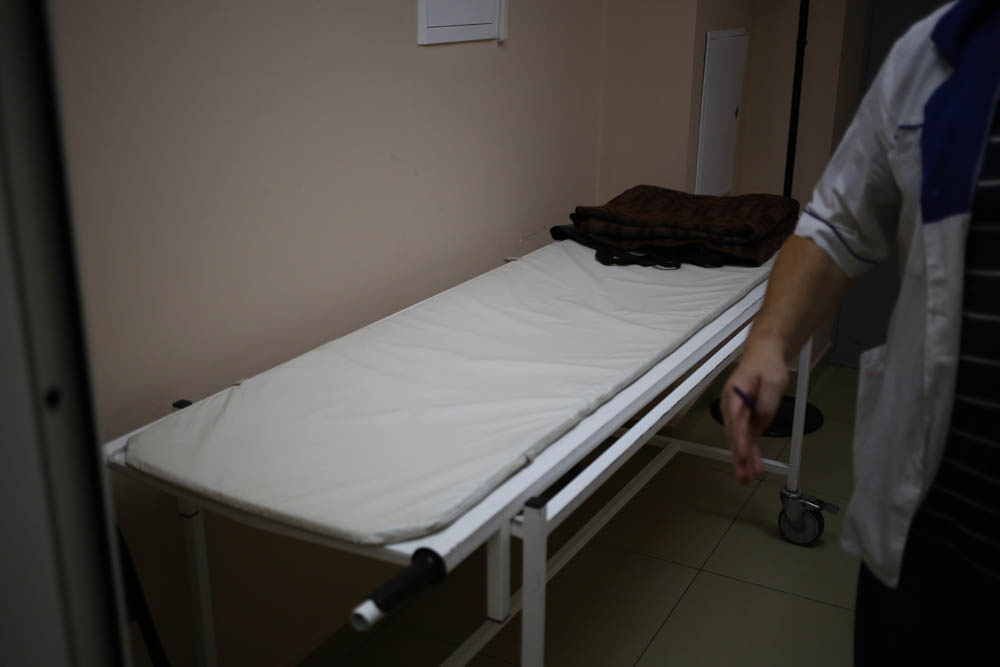
Of the appeals, the most frequent cases are hypertension in pensioners, intestinal infections in guests of Moscow (especially from trains from the southern part of the Russian Federation), different manifestations of the traveler syndrome in foreign guests, sometimes bringing blue bodies. In winter, a lot of colds. Here they give basic pills, make injections (for regular use by chronic patients with a prescription), ligation. The policy is not needed, help - according to an informed consent sheet. Free, of course.
Sometimes people come to the first-aid post to boil the medicine. He is there too.
Hall reference
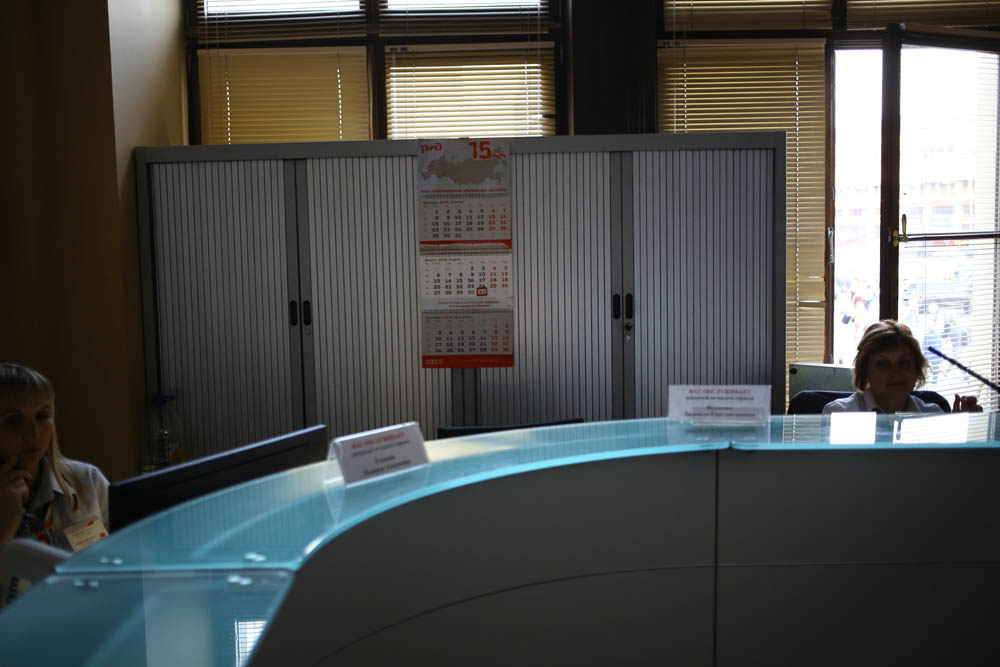
This is the place where you can order an ad if someone is lost. You can also get a paid certificate of train traffic or free, if the train or a train is late (this is sometimes important for the personnel service at work). About a couple of people and several groups of tourists are lost at the station a month (guides sometimes announce where to gather). Offer hands and hearts on the speakerphone can not be done.

At the World Cup was a lot of lateness, helped as they could. The assistants and volunteers were very surprised that many guests like to sleep on the floor, especially distinguished guests from Nigeria, they even arranged on the steps.
More features
Before the World Cup set free charging for phones.

There are almost no homeless people at the station: at the airports they are quite difficult to defeat, but then they simply began to strictly apply the sanitary norms, and they migrated somewhere. This means, by the way, that it’s better not to appear drunk at the Leningradsky railway station: the probability of waking up the next morning at the police station is higher than at other stations.
On the territory of the station live ficuses. They have inventory numbers, and employees take care of them. Water them at night, this cleaning team does. At the station there is a special position in the staffing - environmental engineer. He, among other things, is developing a risk model for ficuses and a plan for their development.

There is Wi-Fi, in particular, necessary for the Railways application to work. Moreover, lighthouses for indoor navigation are hanging around the station, and you can navigate very comfortably in this very application. The same service operates on other major railway stations.
Video of the station - internal and perimeter platform. About 350 cameras.

Books of complaints and suggestions: there is at the station as a whole and in each individual module.

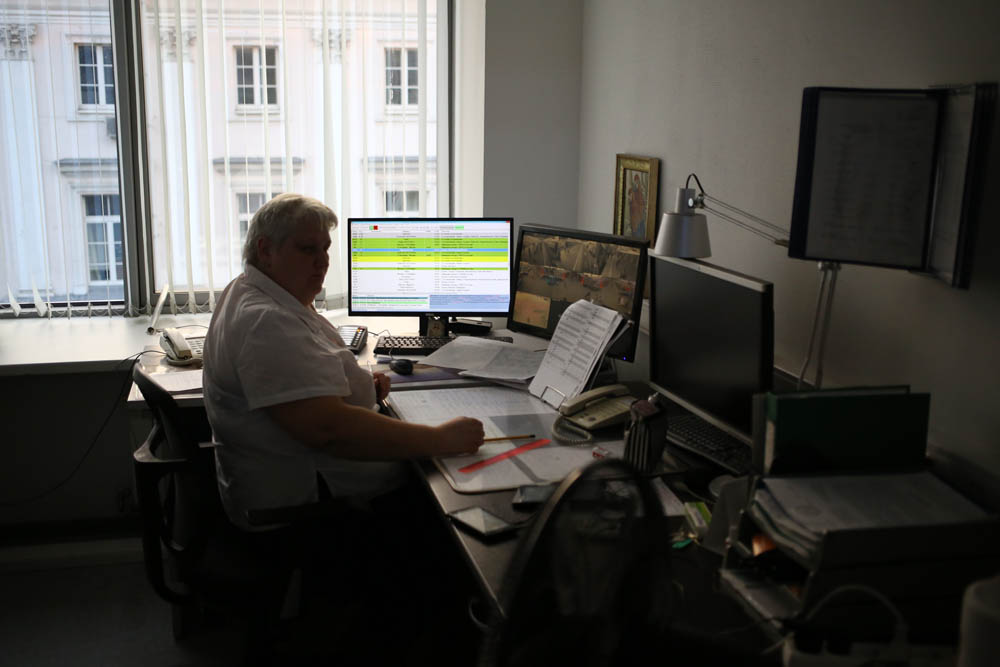
There is a separate announcer - this is to announce in the manual mode in case of failures. Usually, everything is done by a robot that sees a train schedule.
This is how access between distant and suburban in the restaurant is divided:

Station attendant
The station attendant on duty is a kind of hybrid of a brownie and a director. From the director, he has the opportunity to resolve any issues unanimously, and from the brownie - the need to take care of everyone at the station and all its subsystems. He handles all exceptions, but you can contact him with any questions during his shift.
The shift at the duty officer is 24 hours each, because many of the station’s cycles are tied to days, and the station must be received and handed over entirely at the beginning and end of the processes.
The duty officer should always be in touch, so he has a business cell phone and a walkie-talkie with him. With the help of a walkie-talkie, he can communicate with anyone and quickly manage. It is also needed in case of, for example, nuclear war, if the cellular network fails. Because the station is a strategic object. With a walkie-talkie, the duty officer even goes to the toilet.
There is no special secret canteen “for one’s own” at the Leningradsky railway station, everyone eats in ordinary cafes on the territory (although the cafe gives discounts to the station employees). Food, they say, is good there, but still many bring food from home.
Denis Kudinov was with us on duty at the station:
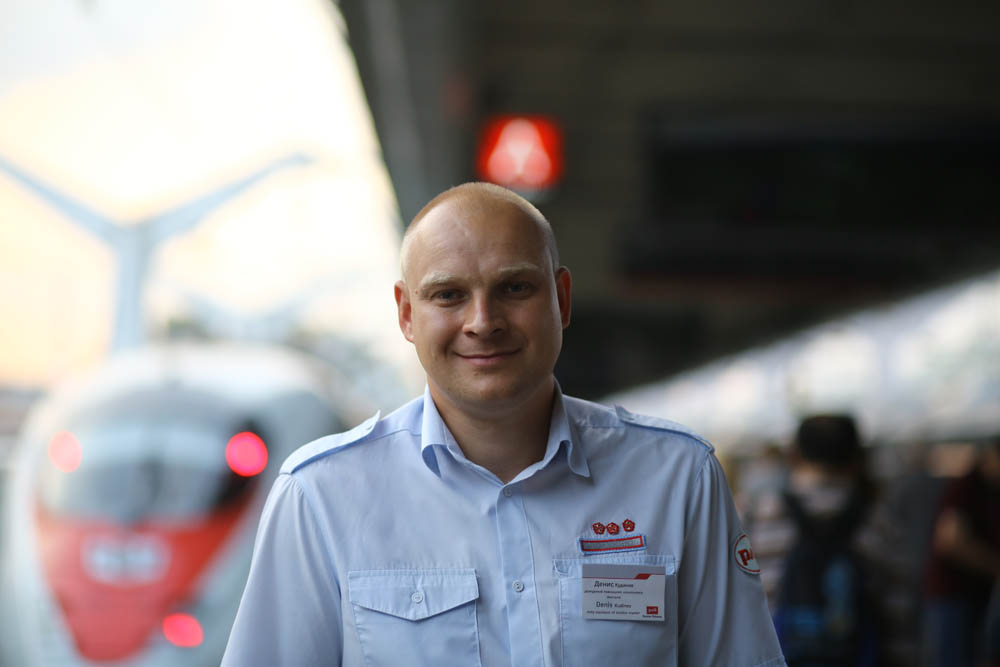
Source: https://habr.com/ru/post/426779/
All Articles